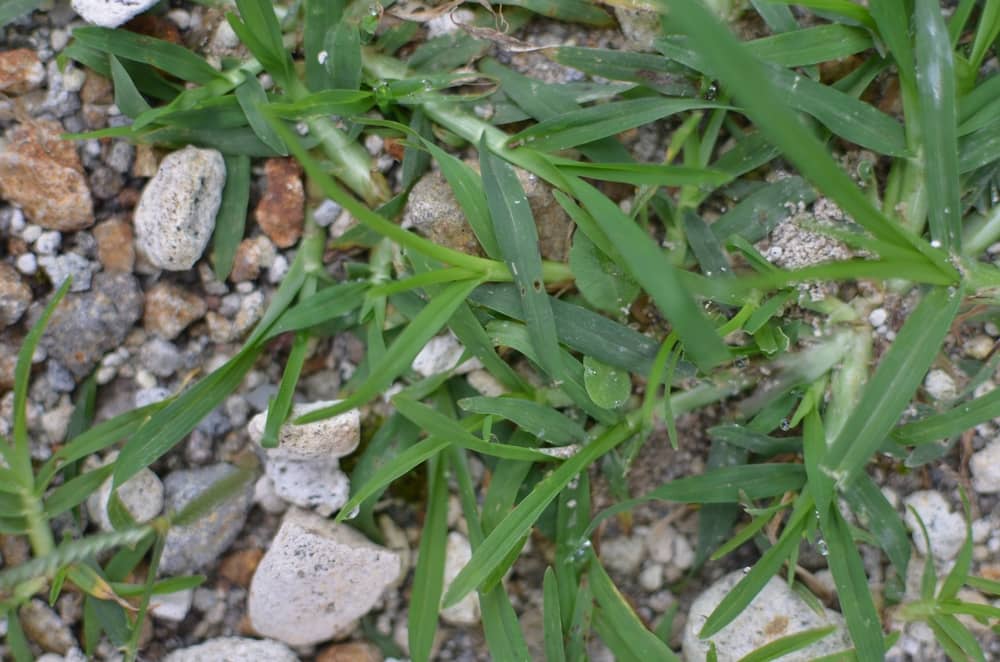
Spring is a time for new growth, whether it be your lawn, flower bed or home garden. Unfortunately, many unwanted weeds also take root during this season, causing major damage to lawns and gardens. One such plant many homeowners should be aware of is crabgrass, an annual warm season grass that thrives in hot temperatures. If you’re concerned about crabgrass overtaking your lawn, you have come to the right place.
How to Identify Crabgrass
As the name suggests, crabgrass has an appearance similar to that of a crab. Growing low to the ground, crabgrass appears in clumps with stems that extend from the center like crab legs. Because crabgrass spreads by seeds, it can quickly overtake lawns, causing damage to the turf during the process as it competes for space, sunlight and nutrients.
What Season Does Crabgrass Appear?
At the end of summer or during early fall, crabgrass will produce thousands of seeds that will spread across lawns. These seeds will remain dormant until spring when the ground warms up. Generally, crabgrass begins germinating when soil temperatures reach 55 to 60 degrees Fahrenheit. It will continue to thrive through hot summer temperatures until early fall when it produces and spreads its seeds. Although the first frost will kill the crabgrass plant, the seeds will remain dormant until next spring.
Where Does Crabgrass Grow?
Crabgrass is native to Europe or Eurasia, but can now be found in almost any home lawn throughout the United States. Because crabgrass favors hot, dry conditions, it grows in landscapes that experience hot summer temperatures. Crabgrass is most common in Southeastern states, but it can be found in other locations as well.

How To Prevent and Control Crabgrass with Cultural Methods
For lawns that are not yet infested with crabgrass, prevention is the key to avoiding its appearance in the future. Maintaining a healthy lawn is essential for preventing any type of weed, especially crabgrass. Always follow proper mowing techniques and cut grass to the correct height. Irrigate your lawn with deep, infrequent watering and fertilize your yard at least once a year.
If crabgrass has already become visible in your lawn, it is possible to remove the weeds without the use of chemicals. Simply use a pitchfork or weeding tool to remove the crabgrass by hand. To make removal easier, spray your lawn with water beforehand to soften the soil. After removing the weeds, add compost and seed the area with more grass seed. This will prevent bare patches and thus ensure a thick, healthy lawn.
How to Prevent and Control Crabgrass with Chemicals
While it’s possible to remove crabgrass by hand, using herbicide is a quicker process, especially if the crabgrass has spread throughout your lawn. There are two main types of herbicides for crabgrass control—a pre-emergent herbicide and a post-emergent herbicide. When using either one of these chemicals, always follow the label’s directions and wear proper safety gear, including gloves, long sleeves and goggles.
A pre-emergent herbicide attacks the seedlings as they germinate, thus preventing the appearance of crabgrass on your lawn. For best results, apply the herbicide once the soil temperature reaches 55 degrees Fahrenheit in the spring. Be sure to cover your entire lawn with an herbicide to prevent any crabgrass from taking root.
If the crabgrass has already established itself, a post-emergent herbicide is necessary. Unlike a pre-emergent herbicide, a post-emergent herbicide will kill crabgrass that has already sprouted. Before applying post-emergent herbicide, water the entire lawn to ensure the soil is moist. For best results, apply the chemicals when temperatures rise between 60 and 90 degrees Fahrenheit. After application, continue to watch for any newly germinated crabgrass and treat it as needed. To prevent any seedlings from appearing next year, you may apply a pre-emergent herbicide in the spring.
After treating your lawn with an herbicide, continue maintaining a healthy lawn to prevent crabgrass in the future. By following proper lawn care techniques, you can avoid the appearance of crabgrass and other undesired weeds.
Related Products
Sorry, we couldn't find any posts. Please try a different search.
